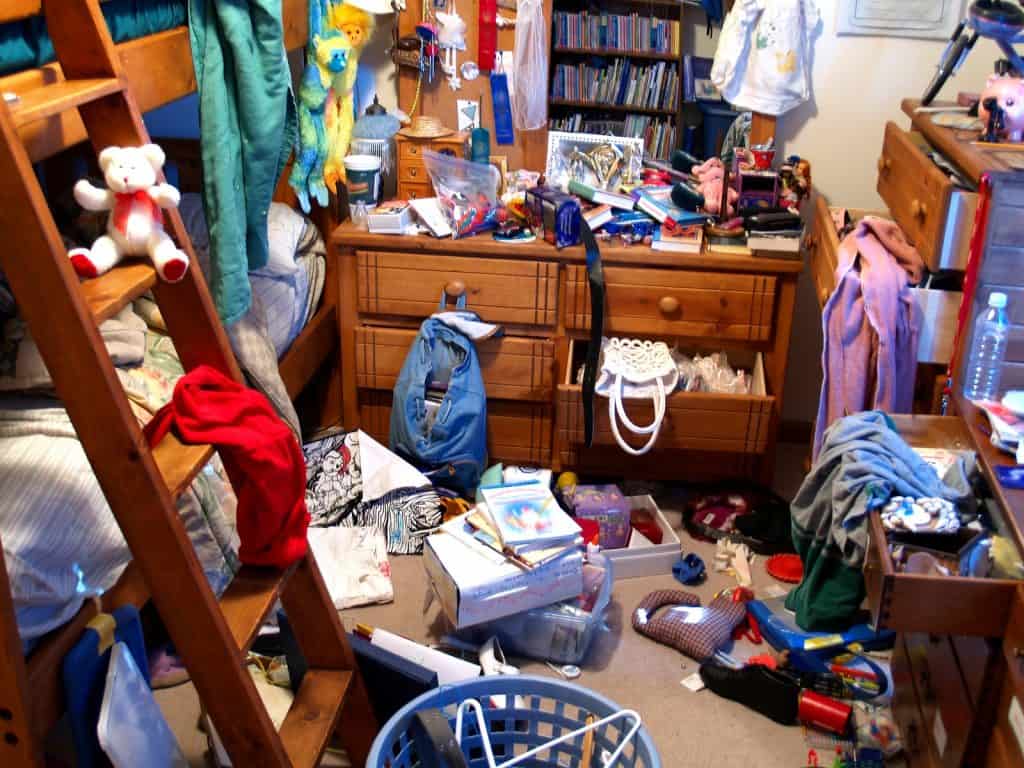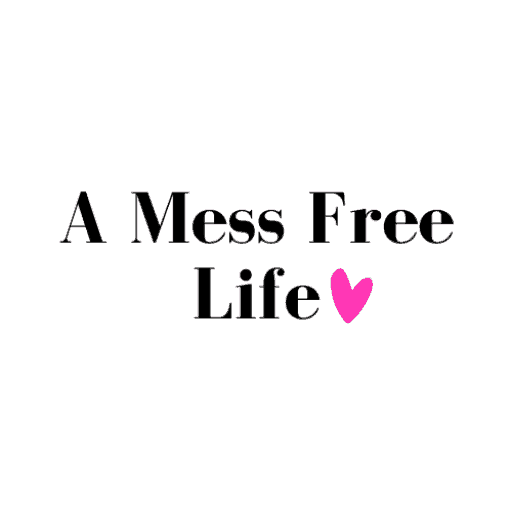A Mess Free Life may collect a share of sales or other compensation from the links on this page.
Overstuffed closets, garages so full you can’t park the car inside, dishes in the sink, toys throughout the house, surfaces used as storage spaces; this clutter not only makes our homes look bad, it makes us feel bad, too.
You probably already sensed this, maybe in your own home.
But researchers at UCLA’s Center on Everyday Lives and Families (CELF) confirmed this very fact when they explored in real time the relationship between 32 California families and the thousands of objects in their homes.
The resulting book, “Life at Home in The Twenty-First Century,” is a rare look at how middle-class Americans use the space in their homes and interact with the things they accumulate over a lifetime.
The book, “Life at Home in The Twenty-First Century,” is an inside look at how middle-class Americans use the space in their homes and interact with the things they accumulate.
So what did they find about our relationship with our stuff?
What does it affect?
Check out this quick video I created that gives you a snapshot of the issues at hand.
Table of Contents
CLUTTER AND YOUR MENTAL HEALTH
Our homes are filled to the brim with items we rarely touch.
Closets are overflowing. Attics and garages hold everything from holiday decor to things we just can’t seem to part with.
All this clutter is taking its toll.
It turns out that clutter has a profound effect on our mental health, mood, and self-esteem.
But it appears that it affects men and women very differently.
First, we’re all susceptible to the notion of rewarding ourselves. “The American workplace is intense and demanding; when we come home, we want material rewards, like people all around the globe.”
However, the study found that are need to reward ourselves materially may increase our stress levels, particularly for moms.
Mom’s in the study used words like “mess,” “not fun” and “very chaotic” to describe the conditions of their homes.
A link between high cortisol (the stress hormone) levels in female homeowners and a high amount of household objects. The more stuff, the more stress women feel. Men, on the other hand, don’t seem bothered by the mess.
It’s a no wonder men and women can’t get on the same page about what to do about clutter.
This leads to the stress and subsequent feelings about not being able to find the time to sort, organize and manage ones’ possessions.
All the mess reflects unaccomplished work and the societal stressors associated with not keeping a tidy home.
So the stress of the material world can get to anybody. Well, almost anybody.
CELF’s researchers also found:
- Women link a tidy home with a happy and successful family. The more dishes that pile up in the sink, the more anxiety women feel
- Even families that want to reduce clutter often are emotionally paralyzed when it comes to sorting and pitching objects. They either can’t break sentimental attachments to objects or believe their things have hidden monetary value.
- Although U.S. consumers bear only 3% of the world’s children, we buy 40% of the world’s toys. And these toys live in every room, fighting for display space with kids’ trophies, artwork, and snapshots of their last soccer game.
Although “Life At Home” is an enlightening read which documents the clutter problem, the book offers no solutions on what to do with all our junk.
But there are some simple things you can do to de-clutter your home and improve your mental health.
THE DECLUTTER STRATEGY
ONE THING AT A TIME
If you’re struggling to declutter your home, try what countless others have done and succeeded. Focus on one thing.
That can be one drawer, one closet or one room.
You decide how much you can handle and then focus on that ONE thing you can do today to declutter your home.
This way you’ll keep the overwhelm to a minimum, be able to complete the task and then celebrate your accomplishment.
TAKE BEFORE AND AFTER PHOTOS
By taking before and after photos, you have a reference point from where you started to how much progress you’ve made. You can use them as a reference point and when you need the motivation to keep plugging away at decluttering.
GO HALF WAY
Got a collection of memorabilia that you can’t seem to part with? Try downsizing the collection by half. This strategy can be especially useful for some of those hard-to-remove items (books, sentimental collections, souvenirs, hobby stuff).
BOX UP YOUR STUFF AND STORE AWAY
If you’re afraid you’ll give something away you’ll need one day, try boxing it up and storing away for say six months. If in that time frame you find you need something, you’ll know where to find it and realize it should be kept and not discarded.
GET HELP
Sometimes, we are so attached to our stuff that it’s hard to know what to hold on to and what to let go. Ask a friend or family member to help you. Let this person be the voice of reason and allow her to vote “yes” or “no” to clothing, decorative pieces, and other items.
Even better, be available to your friend to do the same when she’s under the gun and unable to be the voice of reason when decluttering her own stuff.
DECLUTTER IN STAGES
Some items are easier to get rid of than others. So start with the easy things and build up your decluttering skills.
Items such as duplicates, items that are broken or not usable, decorative items, items you haven’t used in years, things you don’t like, and items that have been in storage for a very long time are easier to let go of.
Every time you let go of something else, it will give you the strength and motivation to continue on the decluttering path.
MAKE THE SHIFT
There is a big difference between organizing and decluttering. Organizing means you’re moving it around from one location to another trying to find the perfect spot for it.
But what if the perfect spot doesn’t exist because you’ve outgrown the possession or you just don’t love it?
Understanding and embracing this will help you make the shift away from organizing and towards decluttering and simplifying.
GIVE GENEROUSLY
Think of decluttering as a charitable act of giving.
You can give away things that you no longer need or want to those who are in need.
By taking the focus off ourselves and onto others, it stops us from worrying about the insignificant. We become more focused on the task of decluttering because we are doing it with a purpose of helping others.
CONCLUSION
Decluttering takes time.
Don’t beat yourself up if your decluttering process is taking longer than you had hoped. Each day that you’re able to make decisions about what to keep, donate or sell is progress.
Remember, even if you declutter for only 10 minutes every day, that’s a whopping 300 minutes at the end of the month where you decluttered. That’s the equivalent of almost an entire day doing nothing but decluttering your space.
Keep up that momentum, and your home will be the reflection of what you seek – calm, simple and peaceful.




